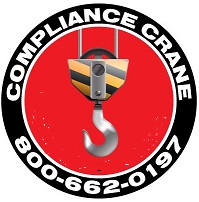Compliance Crane Services is an established manufacturer, service and repair organisation with over 20 years experience of overhead cranes, jib cranes, hoists, gantries, vacuum lifters and lifting equipment.
CCS has developed a huge range of low cost overhead crane options including single and double girder construction, top running and under hung configurations, automated custom cranes, goliath and semi goliath designs and a variety of tailor made systems.
Compliance Crane Services provides a reliable and efficient service to cater for all of your overhead crane’s servicing, maintenance and crane repair requirements at a reasonable cost.
We produce anything from a simple hoist to large overhead cranes and sophisticated automated handling systems and are able to provide lifting solutions for any application.
We are constantly developing our products to stay at the forefront of technology and our investment in computerized design systems enables us to respond quickly to your requirements.
MAINTENANCE & INSPECTION
MAINTENANCE OR INSPECTION, WHAT’S THE DIFFERENCE?
Maintenance and Inspection are commonly confused as being one and the same thing when in actual fact they are completely different.
An inspection is when an engineer carries out a thorough visual inspection of the crane and completes a report identifying and prioritising any necessary repairs. It includes nothing else.
A maintenance visit also includes an engineer carrying out a thorough visual inspection and compiling a report. However, unlike the inspection, it also includes repairs to minor faults to be carried out during the service, any necessary adjustments to brakes and lubrication of mechanical components where applicable.
In general, persons responsible for lifting equipment adopt one of two opinions towards maintenance and inspection contracts. The first is to cover their legal obligation by having their equipment inspected at the maximum permitted interval. The second is to implement a planned maintenance schedule whereby more frequent thorough visits are carried out. The planned maintenance contract has a higher initial cost (longer, more frequent visits) but with significantly noticeable savings over a longer period. Inspection only contracts have a small initial cost but can result in expensive costs being incurred in the long term.
REDUCING CRANE COSTS AND REPAIRS THAT LEAD TO LOST PRODUCTION
The most effective way to reduce overhead crane costs is with the implementation of a crane maintenance contract. By having the equipment thoroughly inspected at regular intervals any repairs found necessary can be scheduled for a convenient time when the crane in question is not needed or can be covered for. This reduces the chance of the crane becoming inoperative at a time when it is essential and slowing or even stopping production.
These repairs are quoted in order that our customers are aware of the total cost beforehand, whereas estimating the cost of a breakdown is impossible. Intercepting these problems at an early stage and repairing the faulty item will avoid unnecessary damage to otherwise good equipment and thus further reduce maintenance costs.
A maintenance contract is not only about reducing breakdowns and expensive repairs it is also largely about increasing the equipment’s ‘life span’ and safety. Lubricating applicable parts on a regular basis reduces wear and ensures the equipment will run in a good condition for as long as possible. Regular inspections will highlight the potential for a dangerous occurrence before it becomes an accident.
With the implementation of Compliance Crane Services maintenance contract and efficient breakdown support service over a twenty four month period most customers see a reduction in crane repair costs of between 40 and 70 percent.
WHAT ARE YOUR OBLIGATIONS? HOW DO I STAY SAFE?
Employers must ensure that equipment is thoroughly examined before it is put into service for the first time and after any significant change that affects its operation. If the equipment is obtained from another undertaking, it must be accompanied by physical evidence that it has been examined. Where safety depends on the installation conditions, it must be thoroughly examined on each occasion after installation or assembly and before use. Equipment must be thoroughly inspected at least every six months if intended for carrying people, at least every 12 months if used for other purposes, or according to a scheme devised by the examiner. Examinations should also take place after any exceptional event such as accident or dangerous occurrence. Examinations must be carried out by competent persons who are sufficiently independent and impartial for objective decisions to be made. Examinations may involve the performance of tests as determined by the competent person.
